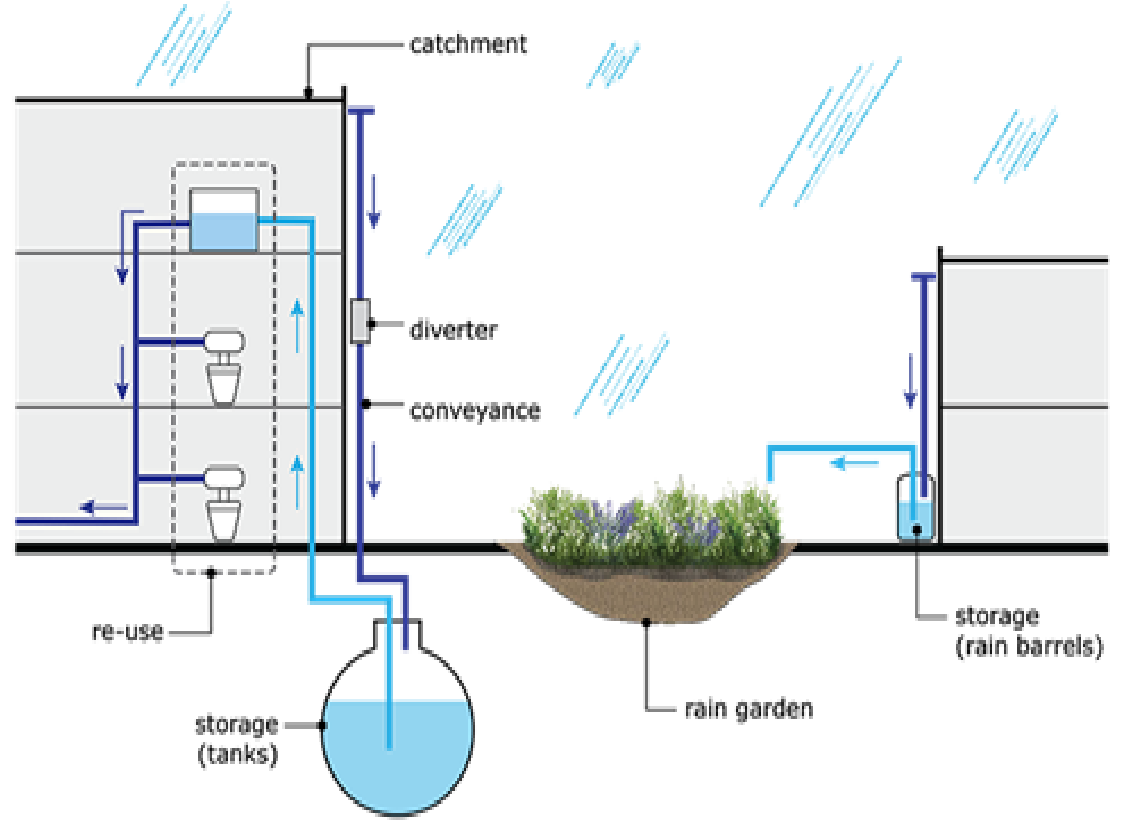
Rainwater Harvesting is an intelligent idea and concept to collect the water during monsoon season so that the water scarcity of other seasons can be fulfilled. Rainwater harvesting is that process in which rainwater is preserved in tanks or diverted undergroundso that it can be used in various applications.Such stored rainwater can be used for agriculture and irrigation. Such harvested rainwater can reduce the overdependence on municipal water supply saving money as well as time
Water harvesting (WH) must be seen as an integral part of sustainable land (and water) management. The basic principle of water harvesting is to capture precipitation falling in one area and transfer it to another, thereby increasing the amount of water available in the latter. The basic components of a water harvesting system are a catchment or collection area, the runoff conveyance system, a storage component and an application area. In some cases, the components are adjacent to each other, in other cases they are connected by a conveyance system. The storage and application areas may also be the same, typically where water is concentrated in the soil for direct use by plants.
1 Catchment or collection area: this is where rain in the form of runoff is harvested. The catchment may be as small as a few square meters or as large as several square kilometers. It may be a rooftop, a paved road, compacted surfaces, rocky areas or open rangelands, cultivated or uncultivated land and natural slopes.
2 Conveyance system: this is where runoff is conveyed through gutters, pipes (in case of rooftop WH) or overland, rill, gully or channel flow and either diverted onto cultivated fields (where water is stored in the soil) or into specifically designed storage facilities.
3 Storage component: this is where harvested runoff water is stored until it is used by people, animals or plants. Water may be stored in the soil profile as soil moisture, or above ground (jars, ponds or reservoirs), or underground (cisterns) or as groundwater (near-surface aquifers). There, where concentrated runoff is directly diverted to fields, the application area is identical to the storage area, as plants can directly use the accumulated soil water. A great variety of designed storage systems keep the water until it is used either adjacent to the storage facilities or further away.
4 Application area or target: this is where the harvested water is put into use either for domestic consumption (drinking and other household uses), for livestock consumption, or agricultural use (including supplementary irrigation).
1. Direct-Pumped -
2. Indirect Gravity-
3. Indirect Pumped -
a ) Catchments : They are surface which receive the rainwater directly and provide them to the system
b ) Coarse Mesh : at the roof to prevent the passage of debris.
c ) Gutters : Channels all around the edge of a sloping roof to collect and transport rainwater to the storage tank. Gutters can be semi-circular or rectangular and could be made using locally available material such as plain galvanised iron sheet (20 to 22 gauge), folded to required shapes.
d ) Conduits : They are the pipelines or drains that carry rainwater from the catchment or rooftop area to the harvesting system.
e ) Downspout Screen : Protect the downspout from debris.
f ) Tank Screens : Your tank will need a screen as additional protection from leaves and other debris.
g ) Firstflushing : A first flush device is a valve that ensures that runoff from the first spell of rain is flushed out and does not enter the system. This needs to be done since the first spell of rain carries a relatively larger amount of pollutants from the air and catchment surface.
h ) Filters : Filters remove contaminants before the water goes into the storage tank
i ) Pumps : Help push water out of the storage tank.